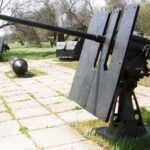
Museum of the History of Eltigen Landing.
Museum of the History of Eltigen Landing (1943-1944) was opened in May 1985. Kerch – Eltigen amphibious operation – the beginning of the liberation of Kerch, was one of the largest amphibious assault during the Great Patriotic War. Troopers were able to capture a small bridgehead of 3 km in length and 1.5 in depth...

Tsar’s Burial Mound.
Tsar’s Burial Mound (IV century BC) is considered to be one of the oldest museum objects of Kerch. It was opened in 1837 by the director of the Kerch Museum A.B.Ashik. The monumental building of the mound is a wonder of ancient funerary architecture. Blocks of the crypt and dromos are made of limestone and...
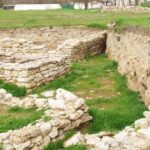
Ancient City of Tiritaka.
The ancient Greek settlement with a barbarous name of Tyritace was located on the shore of the ancient sea bay.The first dwellings on the site appeared in the second quarter of the VI century BC. They looked like houses dug-out in the ground. Soon the houses built on the ground, constructed of adobe bricks on...
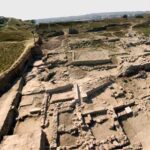
Ancient City of Panticapaeum.
Panticapaeum – the capital of the mighty Bosporus Kingdom, that was located on both sides of the Kerch Strait in the period of its heyday. The city emerged in the second quarter of the VI century BC. At various times the city was called Vospro, Cherkio and Korchev, experienced many internal wars, barbarian attacks, earthquakes,...

Ancient City of Nympheum.
Nympheum was founded at the beginning of the VI century BC. They believe that it appeared on the site of a pre-existing Scythian village. Already in the VI century BC the city had an acropolis. Active development of the city was conducted in the VI – V centuries BC, in the second half of the...
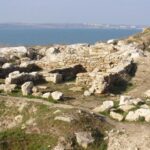
Ancient City of Myrmecium.
The settlement of Myrmecium was founded in VI century BC and by the end of the century it became a closely built up small town. In the IV century BC Myrmecium got prosperity and was completely encircled by the wall with defensive towers. In the heyday of Myrmecium there were several temples, one of which...
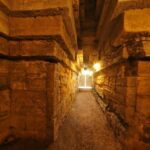
Melek-Chesmenskiy Burial Mound.
Melek-Chesmensky Burial Mound is a unique burial construction dated back to the IV century BC. The Mound’s Dromos is 9 m, it has a ledged shape and is connected to the ledged overlapping of the burial chamber. The burial chamber, almost of a square shape is 3.7 meters. The cell walls are built of clean...
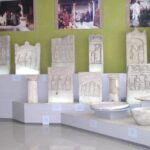
Lapidarium.
Kerch Lapidarium (from Lat. Lapidarius – “carved in stone”) is considered to be the world’s richest museum collections counting the number of the items, its content and its scientific significance. The Lapidarium exhibition includes sculptures, tombstones and epigraphic monuments, architectural details, objects of funerary worship. They are made of stone – imported marble and local...
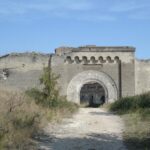
Kerch Fortress.
Kerch Fortress is the unique cultural heritage of the second half of the XIX century. It is a monument of fortification, better known in foreign historiography as “Fort Totleben” – named after E.I.Totleben, an outstanding Russian fortifier. Kerch Fortress, having been built from 1857 to 1877 is a complex of fortifications, typical for the period...
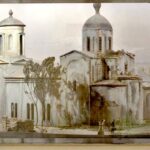
Art Gallery.
Art Gallery is located in a classical style building dated back to the first half of the XIX century, which is listed as an architect monument and is located at the foot of the Great Mithridates staircase. After the restoration of the building on May 7, 1985, on the eve of the 40th anniversary of...
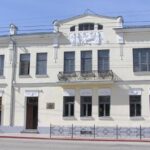
Historical and Archeological Museum.
Kerch Historical and Archeological Museum – Museum of Antiquities was founded in 1826. The museum building is an architectural monument of the XIX century. There are some permanent and temporary exhibitions. 7 halls are opened for visitors, more than 4 thousand items, most of which are the discoveries of recent years, exhibited for the first...







